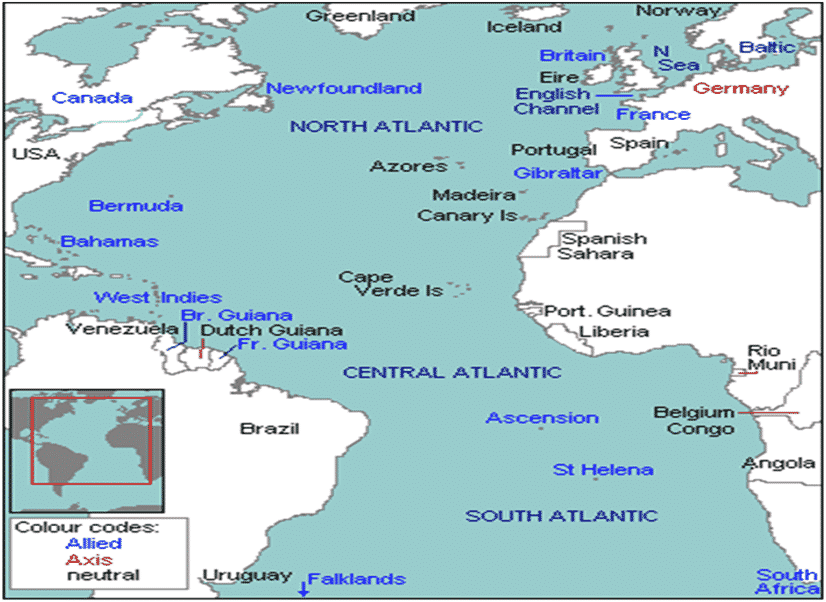Battle of the Atlantic
- Longest battle of World War Two (1939-1945)
- Began on September 3rd 1939
- Fought by ships, U-boats and airplanes
- One of the most costly battles
- Major impact on Germany’s defeat in World War 2
- Battle between Britain and its Allied forces against Germany
Transporting Materials
- Large ship and U-boats were used to transport goods
- Ships transported materials needed for war such as:
- Food
- Oil
- Munitions
- Troops
Convoys
- Ships that were seen by enemy U-boats would be attacked so that they sink
- Travelling in packs and in convoys reduced the chances of being attacked
- Canada played a major role as convoy’s escorts
- Canada provided half of the naval escorts
Map
Victory
- Battle ended around September 1945 after 2,075 days
- British code breakers were able to Enigma code which was used by the Germans
- The radar and the sonar helped greatly by allowing ships to identify where enemy ships were even in bad weather
- Aircrafts helped escort ships and protect them as well as bombing enemy ships and U-boats from above
- Escorts and conveys were able to attack enemy U-boats and ships
Significance
- Britain and its allied forces were able to win World War 2
- Ammunition, troops and food were able to help the soldiers
- 25, 421 ships were able to successfully cross the Atlantic ocean
- The Royal Canadian Navy helped sink 33 U-boats and 42 ships
- Most important battle of World War 2

